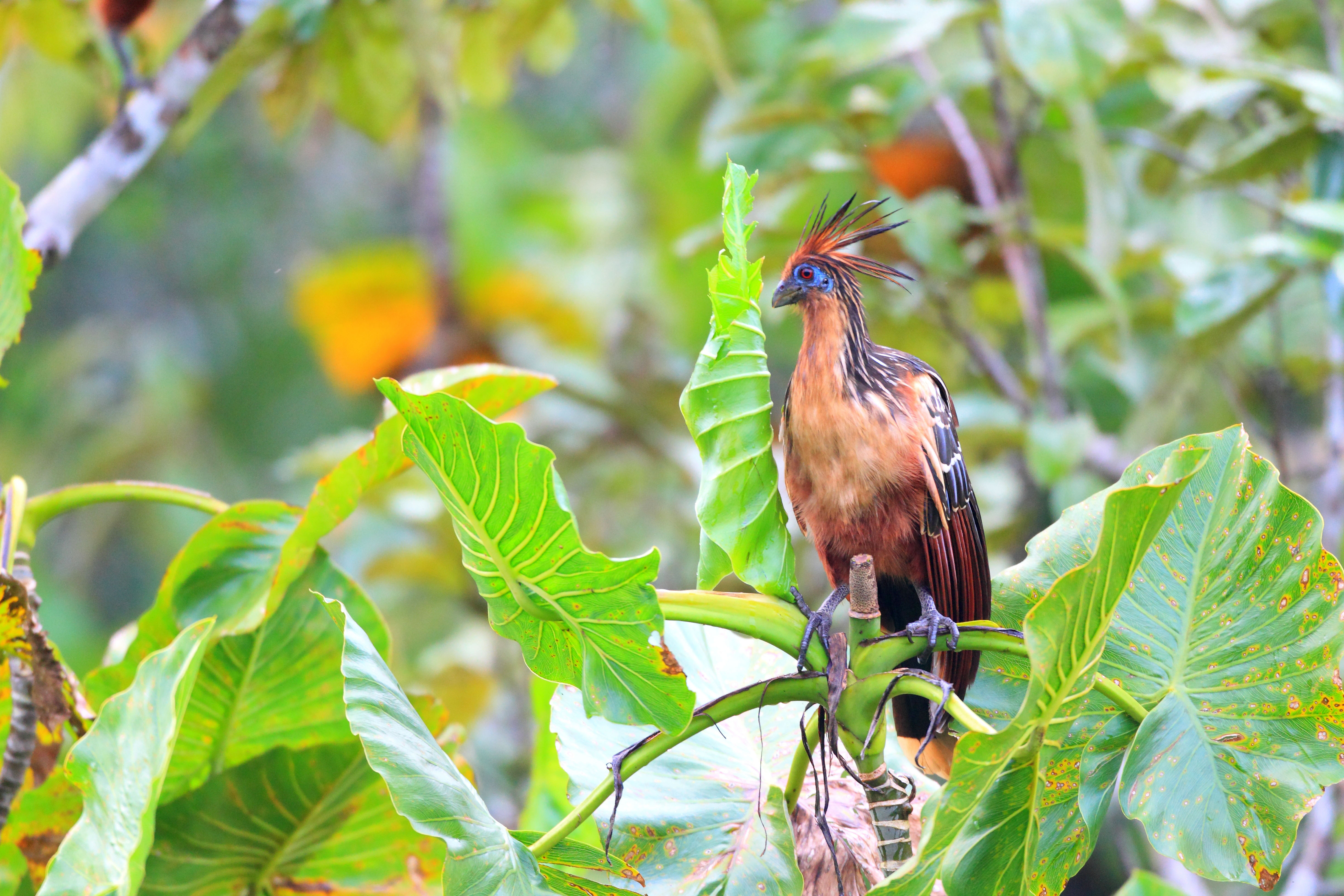Yvonne Butorac travelled on our 'Ecuador's Mammals' tour and submitted this entry to our writing competition.
Hoatzin, Ecuador
You have to see this bird to believe it. A featherless bright blue face with a beady maroon eye, topped by an orange feather Mohawk, attached to a plump oversize chicken body.
Who put this bird together?
And then, consider this. Hoatzins digest their food like cows; their young hatch with claws on their wings to help them cling to branches over water; and when an adult attempts flight it lumbers like an overloaded plane.
Is the Hoatzin one of nature’s whimsies or a design gone terribly wrong?
We didn’t care. We just enjoyed our many encounters with these bizarre members of the avian world during our 4-day stay at Napo Wildlife Centre in Ecuador’s Amazon.
We began this tour on the slopes of the Andes where we successfully located some of Ecuador’s shyer mammals. An Olinguito, recognised in 2013 as a new species, quarrelled with a bullying Kinkajou at Bellavista Cloudforest Lodge. A big, black Spectacled Bear lounged on a roadside hill near Papallacta. And high in Cayambe Coca Ecological Reserve, telescopes revealed a pair of Mountain Tapir with their signature white lips.
This was billed as a mammal tour with birds as a complimentary side. And to date the birds had been grand. Turquoise jays, the colour of a cloudless sky, and garish yellow and green Inca Jays, behaved raucously as jays do. Tanagers of every colour combination appeared, rain or shine, with or without bananas to tempt them. And Booted Racket-tail Hummingbirds with their exclamation mark tails and fuzzy ankles always brought a smile to my face.
Now we were in the Amazon hoping for Giant Otters, tamarins, and anacondas. And about to be delighted by the creek clowns, the Hoatzins.
Hoatzins live only in the Amazon rainforest, most often along slow-moving, shallow streams or oxbow lakes with abundant vegetation at the water’s edge. Often they make their presence known by odd grunting noises that accompany their leaf munching, or by clumsy wing-flapping.
Our introduction to the Amazon began in the oil city of Coca (or Puerto Francisco de Orellana). Here we settled into motorised canoes for the 2-hour journey down the Napo River, Ecuador’s primary Amazonian tributary. Then we transferred to paddled canoes for the final couple of hours along a narrow creek in Yasuni National Park that would lead us to Anangu Lake and the well-appointed Napo Wildlife Centre.
And Hoatzin welcomed us along every stretch of that shallow black water creek. Sometimes four, five or more were perched on an overhanging branch. Sometimes they stayed perfectly still – easier for us to scrutinise their quirky parts. Sometimes they squawked and flew a few feet – better for us to see the rich rust of their underwing coverts and their feathery pantaloon legs. We soon realised that, if you missed one photographic opportunity, another would be right around the next bend.
It wasn’t easy to pull ourselves away each day from the Napo Wildlife Centre to investigate the lake and creeks and the parrot clay-licks. Our red thatched cottages hugged the lake’s edge and all paths led up to the spacious main lodge. From the comfort of chair or hammock on my front porch I could watch the brown swallows at water’s edge and hope for a Giant River otter swim-past. One rainy morning we climbed the 100+ steps inside the lodge to the top of the canopy tower, 36 metres above, and scoped out Red Howler Monkeys, Golden-mantled Tamarins, and countless birds. An elevator (being repaired during our stay) works for the less ambitious.
NWC is owned, operated and staffed by the local Kichwa community. At each level of the main lodge natural wood furnishings and local art pieces remind you of their rich culture. NWC blends comfort and culture with a unique wilderness experience and the Hoatzins stand out as one of its most amusing and easily visible attractions.
Read more about our 'Ecuador's Mammals' holiday.



 Loading search...
Loading search...
